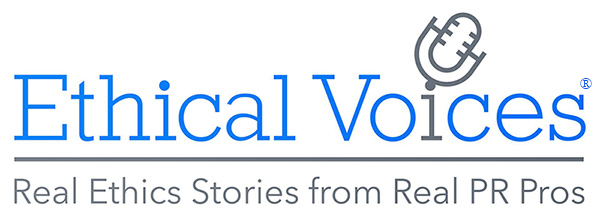For the next few days I will be blogging and tweeting from Ethisphere’s Global Ethics Summit. There was a great breakout session today on “How Communications and Marketing Help Fuel the Ethics Agenda at Leading Companies.”
David Herrick, the managing principal at EthicOne moderated a great panel and the panelists were from industries near and dear to my heart – semiconductor manufacturing (ON Semiconductor) and financial services (Voya and US Bank).
Culture has been a dominant theme at the conference and the consensus is that to be successful, ethics and values communication should be enterprise wide priority at all management levels.
Key session takeaways
Marketing and communications play a significant role in building an ethical culture by communicating values, building a brand and driving engagement.
EthicOne recently conducted a study that identifies best practices for marketing and communications at the World’s Most Ethical Companies. I will have a interview on this in the future that looks in this greater depth, but a few highlights include:
- Who should be a company’s chief ethics spokesperson? Leadership is an essential driver of ethics and therefore the CEO should be an organizations chief ethics spokesperson. The CEO can’t do it alone and should be supported by broad team of senior leaders.
- The importance of frequency and transparency: Is is not enough to discuss ethics annually. Among the World’s Most Ethical Companies as determined by Ethisphere, 74 percent of the CEO’s speak on the topic at least monthly and 84 percent give real world examples. In terms of the mantra of PR pros needing a seat at the table, with the most ethical companies, we have one – 42 percent of the CEOs engage their communications leads on a daily basis on matters of ethics trust value and transparency
- Culture needs to be nurtured and discussed internally and externally at all levels. The company’s culture and what it means is a regular item at every board meeting for ON Semiconductor and are communicated not just via newsletters, but by 40 internal champions and regular in-person meetings.
- What does this mean for financial services and finch companies? In financial services, ethics and reputation are permeating the stakeholder ecosystem. Regulators are now monitoring reputation risk as part of regular oversight. Key items of concern include what are banks doing with regard to marijuana industry, crypto, and firearms industry.
- Practical advice: There is no spreadsheet for reputation risk. US Bank uses a Doppler radar approach to regularly highlight 10 biggest industry reputation risk issues and discuss their response and exposure
The Power of Ethics for Brand Building
As a new brand, Voya Financial did a great job raising awareness with consumer, but based on their research found consumer trust was lagging, which was impacting their growth. The company made the strategic decision to highlight their ethics commitment in advertising and saw significant improvement in trust over their peers.
- Practical Advice: Using surveys, Voya found highlighting they were one of the World’s Most Ethical Companies was a stronger lever than Fortune’s Most Admired Companies. Being ethical is a stronger hook with consumers than being admired.
Overcoming Resistance to Highlighting Ethics Externally
One of the common objections from senior executives and legal to making ethics a part of the communications campaign is that people are reluctant to “put target on our back” or worry “what if some knucklehead does something stupid.”
Aside from the great research from Edelman that shows the financial benefit of building trust, the consensus best response is that being ethical it doesn’t mean you are perfect. It means you respond as perfectly as you can and will respond appropriately to any incidents. People tend to give trusted companies some slack when there is a mistake. This is even more compelling for financial services companies – SEC sentencing guidelines look at if an organization promotes an ethical culture. They look at does an organization just have a code of conduct or does it have ongoing communications. Paul Gennaro from Voya posited that the time invested can mitigate risk and “help reduce or eliminate fines when a knucklehead does something wrong.”
US Bank takes it a step further. They measure reputation across 29 different stakeholder groups. That creates business a case to invest in it.
But keep in mind…
Communications professionals can’t just start adding that their organization is an ethical company in their blog posts, newsletters, ads and releases. (Like they seem to do with AI, cloud, and other terms). You need proof points. Dana Ripley, the Chief Communications Officer for US Bank, indicated that their research shows unless you can back up your ethics claim that people will trust you less.
He put it a bit more colorfully: “It’s like saying you are good looking. That is not enough.” You need to actually be ethical (and/or good looking). You can give all proof points you want about how you are ethical or good looking, but if you are not…you won’t be ethical or good looking.
Expect more updates and interviews over the next few days
- Lessons from a PR Legend: Dick Martin on Ethics, Accountability, and Finding the Hard Truths - August 4, 2025
- Fighting Mosquitoes and Misinformation: Ethics in the Public Health Trenches - July 7, 2025
- How to Effectively Address Management Decisions that Conflict with Your Values – Carolyn Smith Casertano - May 27, 2025

1 Comment